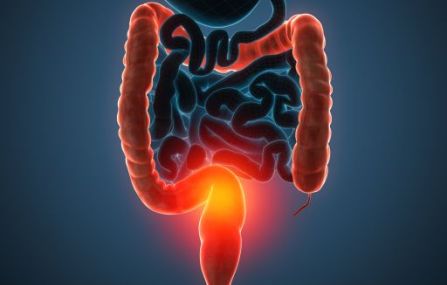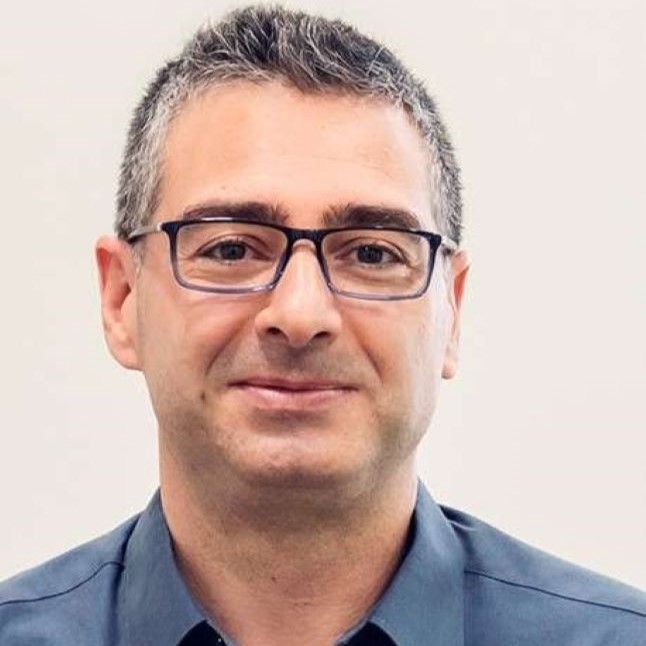 Proctology is a special field of general surgery that deals with diseases of the rectum and its surroundings. The most common diseases affecting the rectum are: hemorrhoids, anal fissure, rectal polyps, rectal inflammation and rectal cancer. Based on the results of a proctological examination, a specialist can suggest various procedures to treat the problem. If conservative methods are not sufficient for healing, surgical intervention is required.
Proctology is a special field of general surgery that deals with diseases of the rectum and its surroundings. The most common diseases affecting the rectum are: hemorrhoids, anal fissure, rectal polyps, rectal inflammation and rectal cancer. Based on the results of a proctological examination, a specialist can suggest various procedures to treat the problem. If conservative methods are not sufficient for healing, surgical intervention is required.
To detect rectal problems, the proctologist first performs a rectoscopy or anoscopy (examination of the segment localized to the rectal sphincter). At Duna Medical Center, the findings are photo-documented, which is also given to the patient with the outpatient slip. If further complaints arise, the previous change can be more easily compared, or the degree of improvement can be judged.
Surgical treatment of hemorrhoids
Hemorrhoids are divided into 4 groups based on their size and protrusion. In case of symptom or complaint-free cases, if the hemorrhoids are small (stage 1-2), it is not necessary to treat the hemorrhoids surgically. In case of milder complaints, conservative treatments may be sufficient: lifestyle changes, use of ointment, or tablet treatment may be a solution.
Treatment of hemorrhoids with Barron ligature placement
Another possible conservative treatment method for certain types of hemorrhoids is the placement of a Barron ligature. During the procedure, the protruding hemorrhoid node is tied with a rubber ring. This cuts off its blood supply, leading to the necrosis of the hemorrhoid. The necrotic stump falls off with the rubber ring and usually leaves the body during defecation. To prevent the risk of bleeding, we often place two rubber rings in the same place. In addition, the bleeding hemorrhoid can be closed with infrared light. The procedure is painless, and post-treatment is usually not required. Straining physical work is not recommended in the days following the treatment, but usual daily activities can be continued calmly.
HAL-RAR surgery
If conservative procedures are not suitable for the treatment of hemorrhoids, then classic surgical intervention may also be necessary. In the case of stage 2-3 hemorrhoids, it may be sufficient to remove them in the appropriate direction, or simply to tie off the supplying vessel using the so-called HAL method - under ultrasound control. In the most severe cases, this is supplemented with the RAR technique.
With the HAL-RAR procedure, you can get rid of your hemorrhoid complaints almost painlessly and without a cut.
The essence of the procedure is that it is done without a cut, under anesthesia, and takes only about 20 minutes. A specially developed ultrasound sensor is introduced into the rectum, which determines the location of the vessels supplying the hemorrhoid nodes. The surgeon "sutures and ties" these vessels, i.e. terminates their blood supply. This way, these troublesome nodes start to shrink and disappear in a few weeks. This is called the HAL technique.
In the most severe stage, when the hemorrhoidal nodes in the rectum have dilated so much that they constantly protrude from the rectum, the RAR technique is used as a supplement. During this procedure, we "pull up" the "slipped" mucous membrane with the help of a suture, i.e. we lift the protruding hemorrhoidal node back to its original place. The tissue then heals, fixes and heals without a trace in this way.
After the surgery, the patient can leave the hospital the same day, and can return to work in 1-2 days.
You can read in detail about the gentle HAL-RAR procedure and its benefits by clicking here.
The Longo method with a sewing machine may be considered in the case of circular hemorrhoids or possible mucosal prolapse (inversion).
Rectal hernia
In women, a rectal hernia can develop, which is a protrusion of the rectum into the vagina. Its treatment is possible by removing the protruding part, for which the STARR surgery, also performed with a sewing machine, is recommended.
The advantage of the surgery performed with a sewing machine is less pain, reliable bowel suture, less strain and trauma.
We use transanal mucosal resection to remove other rectal changes, during which we work in the rectum with thin instruments suitable for laparoscopic technique, ensuring visibility by filling the rectum with gas (TAMIS).
Rectal fistula (fistula) surgery
We call that change a fistula when a pathological connection is established between organs or body cavities in the body, or a pathological connection is established with the outside world. These pathological connections can be congenital or can occur as a result of an accident, infection or surgical intervention.
The development of the fistula and the abscess with it:
As a result of a previous inflammation or abscess, perforation caused by a foreign body, Crohn's disease, or inflammation of the glands found between the muscle layers of the intestinal wall, pus accumulates in the environment of the rectum, which then tries to leave the tissues around the rectum, and in doing so it forms corridors for itself - we call this a fistula. If it breaks to the surface, it usually appears as an abscess, which is a painful lump next to the rectal opening. The inflamed abscess usually comes with a fever and requires immediate surgical solution.
During the operation under anesthesia, we open and clean the abscess cavity wide. The open treated wound of the rectal abscess usually heals within a few weeks after exposure. However, if the tiny passage causing the original infection remains open from the inside of the rectum, the discharge may continue through it. Next to the rectal opening, one or more small, non-healing openings may remain on the skin with varying amounts of purulent discharge, even years after the abscess has formed. Without intervention, the healing of the passages - the rectal fistula - cannot be expected, it can basically only be eliminated by surgical intervention.
Symptoms of rectal fistula:
However, the appearance of an abscess is not necessary for the development of rectal fistula disease, it can also exist without it. The most common complaint is continuous or intermittent purulent, bloody discharge, transient tense pains. In case of persistent complaints, chronic inflammation develops in the surrounding soft tissues, occasionally causing an abscess (but not necessarily). Since the disease can also damage the function of the rectal closing muscle, it is very important to seek a proctologist as soon as possible.
The rectal fistula surgery can be performed using various techniques. In each case, our aim is to preserve the rectal sphincter muscle to prevent the development of sphincter insufficiency and associated gas and stool retention problems as late complications after the operation.
If the fistula runs superficially under the skin and does not affect the sphincter muscles, then we perform a relatively simple surgical procedure, in which we open the skin under anesthesia and clean out the inside of the fistula. Then we leave the tract open and allow it to heal from the bottom up, similar to a wound. Since the operation does not affect the rectal sphincter, stool retention disorder cannot occur.
However, if the rectal fistula is located higher in the rectum and passes through the rectal sphincter muscle, then we perform the surgical intervention under day care, under anesthesia, or spinal anesthesia.
The main types of surgery are as follows:
- Removal of the fistula and closure of the fistula: In this case, we remove the outer opening and the fistula up to the sphincter. The part running through the sphincter is usually closed with sutures, and the inner opening is covered with a flap formed from the mucous membrane.
- Elimination of the rectal fistula by laser: During the operation, we only cut out the inner, rectal, and outer openings of the fistula. After this, a special laser fiber is inserted into the remaining fistula tract, which "welds" the wall of the fistula tract by the circumferentially emitted energy, thus completely sealing it. This stops the discharge and the fistula tract is absorbed. The great advantage of the procedure is that the entire environment of the fistula tract does not need to be disassembled, so it comes with a quick and almost painless recovery. Normal lifestyle can be resumed 1-2 days after the minimal wounds.
Other procedures:
- Fistula plug application
- Use of own tissue adhesive, platelet-rich plasma
- Use of OTC clip, usually in Crohn's disease, in special cases
Postoperative tasks
After the surgery and the necessary observation period, the patient can leave the hospital on his/her own feet, accompanied. Physical exertion should be avoided in the first week. The pain after the operation appears primarily during defecation in the first 5-7 days. Painkillers and suppositories are recommended to alleviate the pain.
Regular and soft stool is very important, especially during the healing period, we recommend the consumption of 1 tablespoon of paraffin oil 3 times a day, next to which the use of other laxatives is usually not necessary. In case of persistent heat rise, fever, possibly severe bleeding, or if you notice any other symptoms that differ from the normal healing process, please contact our institution immediately.
-
Anal fistula surgery (fistula/abscess)From 450 000 Ft
-
HAL-RAR hemorrhoid surgeryFrom 650 000 Ft
-
Hemorrhoid surgery (Longo, rectocele STARR procedure)From 798 000 Ft
-
Perianal surgeries (removal of minor hemorrhoids, fissures, condylomas, and other lesions)From 381 000 Ft
-
Radical excision of pilonidal sinusFrom 453 000 Ft
-
Traditional hemorrhoid surgeryFrom 453 000 Ft






